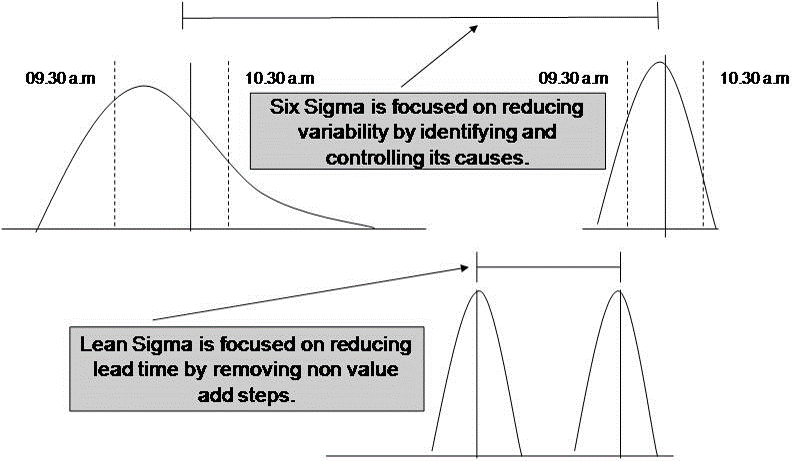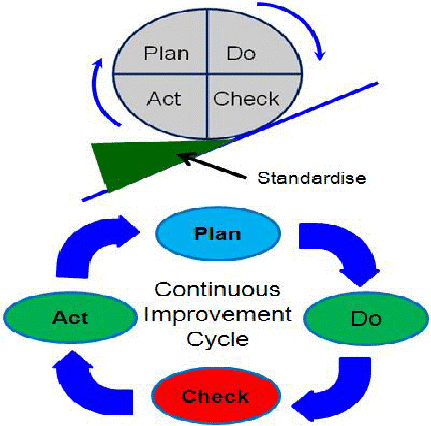Lean Six Sigma or Lean Sigma combines the use of two key quality improvement objectives: making work better (using Six Sigma) and making work faster (using Lean principles).
Wikipedia outlines the statistical background of the term Six Sigma as follows: Sigma (the lower-case Greek letter σ) is used to represent the standard deviation (a measure of variation) of a statistical population. The term "six sigma process," comes from the notion that if one has six standard deviations between the mean of a process and the nearest specification limit, there will be practically no items that fail to meet the specifications. This is based on the calculation method employed in a process capability study.
In a capability study, the number of standard deviations between the process mean and the nearest specification limit is given in sigma units. As process standard deviation goes up, or the mean of the process moves away from the centre of the tolerance, fewer standard deviations will fit between the mean and the nearest specification limit, decreasing the sigma number.
Sigma numbers and yields:
Yield Sigma Level
30.85% 1
69.15% 2
93.32% 3
99.38% 4
99.977% 5
99.99966% 6

Lean Sigma primarily uses the Deming Cycle inspired DMAIC method to improve existing business process.
The basic DMAIC method consists of the following five steps:
Define high-level project goals and the current process.
Measure key aspects of the current process and collect relevant data.
Analyze the data to verify cause-and-effect relationships. Determine what the relationships are, and attempt to ensure that all factors have been considered.
Improve or optimize the process based upon data analysis using techniques.
Control to ensure that any deviations from target are corrected before they result in defect.
Set up pilot runs to establish process capability, move on to production, set up control mechanisms and continuously monitor the process.

Darwen Management Services
Management Consultancy & Interim Solutions

Darwen Management Services Ltd Registered Address 19 Railway Rd, Darwen BB3 2RG Company Number 4189531.
Please call on 07855 806595 to discuss your business challenges. Messages - 01254 760806
dms is an ICAEW registered professional services firm specialising in small and large business performance improvement and change programmes.
‘Improving Performance;
Delivering Change’
